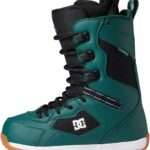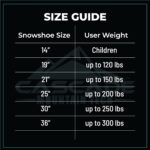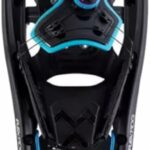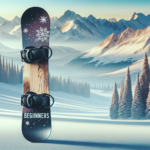Are you ready to shred some powder this winter season? From flex and tech features to compatibility and size, choosing the perfect snowboard binding can be a daunting task. Let’s embark on a journey to help you discover which snowboard binders will offer that perfect balance of control, comfort, and performance on the slopes. The article, “How To Choose A Snowboard Binding”, has all the information you need to make the right decision. Like a reliable guide, it will lead you through the thick forest of options until you find the ideal pair ready to turn your snowboarding dreams into reality.
Understanding Snowboard Bindings
Snowboarding is a thrilling and exciting sport, but it’s essential to get your gear right for a safe and enjoyable experience. One critical piece of equipment that intermediates and beginners rarely think about is the snowboard bindings.
What are Snowboard Bindings?
Snowboard bindings are crucial components of your snowboard setup that keep your feet securely attached to the snowboard. They act as the connection between your feet and your snowboard, allowing you to control the board’s movements.
Importance of Effective Snowboard Bindings
The right snowboard bindings significantly enhance your ability to control the board resulting in a better performance on the slope. They also provide comfort for your feet during long days on the mountain, reduce foot fatigue, and provide safety by keeping you securely attached to your board.
Types of Snowboard Bindings
Different types of bindings cater to varying riding styles, preferences, and conditions. Here are the major ones:
Strap-In Bindings
These are the most popular type of bindings due to their reliability, adjustability, and control. They typically have two straps – one over your toes and the other around your ankles.
Rear Entry Bindings
These bindings have a highback that reclines to let you slide your foot in, offering faster entry and exit – Perfect for those who want to get in and out of their bindings quickly.
Step-In Bindings
Step-in bindings are convenient as they only require a single action to engage and disengage. They’re easy to use and increase efficiency but may lack the same level of control as other types offer.
Choosing the Right Binding Style
The correct style of binding depends largely on how you like to ride; the terrain you frequently ride on, as well as your skill level.
Ease of Use
Some binding styles are better suited for beginners due to their ease of use. For instance, rear-entry and step-in bindings can be less fussy to handle.
Performance and Control
Performance-based riders or those who prefer backcountry and off-piste terrains should consider strap-in bindings for greater control.
Comfort and Fit
Before buying, try on different binding styles to see what feels the most comfortable and secure.
Sizing your Snowboard Bindings
Just as snowboards and boots come in different sizes, so too do bindings. The right size binding will improve your board’s responsiveness and ensure your safety on the slopes.
Determining Your Binding Size
Bindings usually come in small, medium, and large sizes. Your boot size generally determines the correct binding size.
Consideration of Boot and Binding Compatibility
Not all bindings work with all boot types, so it’s crucial to ensure compatibility. If unsure, taking your boots to the snowboard store can help.
Adjusting Bindings for Better Fit
Once you’ve purchased your bindings, you can adjust the straps and highback for a better fit. This tweaking will help gain the most control over your snowboard.
Understanding Binding Flex
Bindings come with varying levels of flex. Your choice of flex largely depends on your riding style and personal preferences.
Soft Flex
A binding with a soft flex is more forgiving, making it suitable for beginners or for freestyle riding where maneuverability is key.
Medium Flex
This is a versatile option, offering a balance of control and flexibility. They’re good for all-mountain and freeride snowboarding.
Stiff Flex
These are suited for high-speed, aggressive riding because they offer the most support and response.
Choosing the Right Flex for You
A great way to determine what flex suits you best is by trying out different bindings and seeing what feels the most comfortable and works best with your riding style.
Determining Binding Compatibility with Your Snowboard
Not all bindings are suitable for all snowboards, so it’s essential to understand how to determine compatibility.
Understanding the Hole Pattern
Snowboards have different hole patterns where the bindings attach. Ensure the bindings you choose match the hole pattern on your snowboard.
Checking the Board’s Width
Getting a binding that doesn’t fit your snowboard’s width can cause your boots to hang off the side, affecting your control over the board.
Compatibility with Snowboard and Boot
Ultimately, your snowboard bindings need to be compatible with both your boots and your snowboard to ensure a secure and comfortable ride.
Understanding Highbacks
Highbacks are the part of the binding that rises vertically behind your calf, providing support and control while snowboarding.
Purpose of Highbacks
Highbacks help with control during heel-side turns and provide support during jumps. They also prevent you from slipping backwards while leaning on your heels.
Choosing the Right Highback
Different highbacks offer varying degrees of control and comfort. Highbacks with a higher rise provide more control but might be less comfortable, while lower ones are more comfortable but provide less control – so choose depending on your preference.
Picking The Right Binding Material
The material your bindings are made of will impact their overall performance and durability.
Plastic Bindings
These are lightweight, affordable, and great for beginners but may lack durability.
Composite Bindings
Bindings made compose of a blend of plastics and other materials, are durable and lightweight.
Metal Bindings
Metal bindings are highly durable and offer excellent performance but can be a bit heavier.
Factors to Consider When Choosing Binding Material
You need to decide what matters most to you – budget, weight, performance, or durability – to pick the right binding material.
Additional Snowboard Binding Features
Additional features can significantly enhance your riding experience. Some features to consider include:
Baseplate Cushioning
Cushioning can increase comfort, absorb impact, and reduce overall wear on your body.
Binding Straps
Straps keep your feet secure in the bindings. Look for straps that are comfortable and easy to adjust.
Lean Adjusters
These adjust the highback’s forward lean and can make a real difference in your riding, particularly for carving and freeriding.
Choosing Bindings Based on Your Riding Style
The style of bindings you choose should align with your riding style.
Bindings for Freestyle Riding
If you’re into freestyle riding, look for lightweight bindings with a soft to medium flex for maximum mobility.
Bindings for Freeriding
Freeriding demands control and response, so stiffer bindings with a highback are more suitable here.
Bindings for All-Mountain Riding
If you’re an all-mountain rider, consider bindings with a medium flex which offer a balance between control and flexibility.
Choosing a binding might seem complicated, but with this guide, you’re well on your way to making the right choice. Remember to consider your personal preferences, riding style, and comfort above all when choosing the perfect snowboard bindings. Happy snowboarding!
- What Snowboard Bindings Should I Get? - January 23, 2024
- What Size Screws For Snowboard Bindings? - January 23, 2024
- How To Snowmobile On Water? - January 23, 2024










